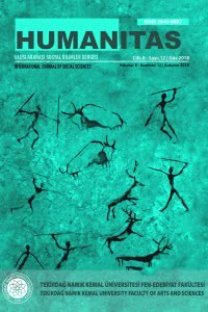BİR YAZ İLİŞKİLERİ ROMANI: TARQUINIA’NIN KÜÇÜK ATLARI
Marguerite Duras’ın Tarquinia’nın Küçük Atları, ezici sıcağın baskın olarak duyumsandığı İtalya’da deniz kıyısında tatillerini geçiren biri tek çocuklu, diğeri ise çocuksuz iki çiftin sevisel bağlarını sorgulamalarının anlatımıdır. Romanda özellikle çiftlerin oluşu beraberinde bu bağların sorgulanması sonucunu getirir. Bu iki çift dışında diğer üç roman kişisi ise Sara ve Jacques’ın hizmetçisi olan Jeanne, Diana ve Adamdır. Her şeyin ‘tam bir uyuşukluk içinde’ olduğu bu yer ‘dayanılmaz sıcaklığı’ akşam esintisinin bile hafifletemediği bir yerdir. Bu uyuşukluk hali her yeri ve herkesi öylesine kuşatmıştır ki aşklar bile bu uyuşukluğa ayak uydurmak zorunda kalmış gibidir. Bunaltıcı ve yakıcı sıcağın tam bir edilgenliğe sürüklediği roman kişileri, küçük atları gösteren freskleri görmek için Tarquinia’daki Etrüsk kalıntılarına gitmeyi dahi başaramazlar. Birkaç kilometre uzakta olan bu yere gitmek için bir türlü herkese uyan bir gün belirlenemez. Kahramanların öz varlıklarının altında tam bir uyuşukluk hali hâkimdir. İlişkilerin kurulup dağıldığı bu tatil beldesinde hiçbir aşk öyküsü ya da hiçbir dram zaman ve uzama tümüyle sinmiş olan uyuşukluk ve tembelliği yıkamaz. İkinci Dünya Savaşı artıkları olan mayınları toplamakla görevli yoksul bir gencin mayınların patlaması sonucu ölümü ve filizlenen bir aşk dahi bu yorucu ve boğucu ortamı değiştirmeye yet(e)mez. Bu boğucu sıcak ve uyuşukluk tüm benlikleri öylesine kuşatmıştır ki tatilde duyumsanan boşluk ve rehavet hissinin ötesine geçmiştir. Bunaltıcı sıcağın doğurduğu tembellik ve uyuşukluk hiçbir sonuca ulaşmayan sıradan olaylarla bezenir. Yazın tüm gevşekliğiyle ağırlaşan olay örgüsü insan ilişkilerini kurguda yaratılan bu gevşek dokuyla sessiz sedasız ancak derinden ve sarsıcı bir şiddetle sorgular.Anahtar Sözcükler: Marguerite Duras, Tarquinia’nın Küçük Atları, Aşk, Yaz, SıcakA SUMMER RELATIONSHIP NOVEL: THE LITTLE HORSES OF TARQUİNAAbstact: The Little Horses of Tarquina by Marguerite Duras is the expression of inquiry of the emotional ties of two couples, one of which has two children and the other one is childless. They spend their holidays near seaside in Italy where the heat is felt very strongly. That is especially the existence of couple in the novel which makes these emotional ties questioned. Except for these two couples, other three characters of the novel are Sara and Jacque’s maid named Jeanne, Diana and Adam. It is a place where everything is so sluggish that even an evening breeze cannot cool this unendurable heat. The numbness falls down on everybody and everywhere that even loves have to adjust to this numbness. The characters of the novel who are oppressed by the burning weather cannot even succeed in going to Etrüsk in Tarquinia to see frescos which show little horses. Any suitable day for anyone cannot be arranged in any way to go to that place far away a few kilometers. The sluggishness is dominant inside the heroes. In this holiday resort in which relationships are established and ended, any kind of love story, any kind of drama can’t demolish this sluggishness and laziness that penetrate the time and place. Even the result of the death of a poor boy who is responsible for picking up mines and a love which is about to begin isn’t enough or can’t be enough to change sweltry and tiring environment. This sweltry and sluggish weather is so dominant inside the characters that it has gone beyond the feeling of emptiness and slackness. The laziness and sluggishness caused by the weather are covered by the events that have no results. The plot is slowed down by the looseness felt in the summer, and silently but deeply questions this loose case and traumatic relationships between the characters of the fiction.Keywords: Marguerita Duras, The Little Horses of Tarquinia, love, summer, hot
___
- Akten, S. (1994). Duras Üstüne Ruh Çözümsel Bir Eleştiri. Frankofoni, (6), 155-171.
- ----------- (1996). Romancı Yönüyle Marguerite Duras. Ankara: Doruk Yayıncılık.
- Aliette, A. (1991). Yaşam Öyküsü Oyunu. (Çev. Sevim Akten). Argos: Duras Özel Sayısı, (32), 64-69.
- Cousseau, A. (1999). Poétique de l’enfance chez Marguerite Duras. Cenève: Droz.
- Duras, M et Porte, M. (1977). Les Lieux de Marguerite Duras. Paris: Minuit.
- Duras, M. (1988). Soyut Yaşam. (Çev: Bertan Onaran). İstanbul: Yüzyıl Yayınları.
- -------------- (1996). Tarquinia’nın Küçük Atları. (Çev. Leyla Gürsel). İstanbul: Can Yayınları. (1953).
- Duvignaud, J. (1995). Le clair-obscur de la vie quotidienne. Les Cahiers Renaud-Barrault, 18-19.
- Er Kılıç, A. (1995). İletişimsizlik Kavşağında Marguerite Duras’ın Oyunları. Frankofoni, (7), 267-277.
- İnal, T. (1989). Marguerite Duras. Yeni Yazı Örnekleri, Tarquinia’nin Küçük Atları ve Sevgili. Argos, 150-153.
- İnal, T. (1994). Thantos’tan Eros’a/ Eros’tan Thanatos’a Marguerite Duras. Frankofoni, (6), 187-193.
- ---------- (2010). L’Orient et Son Double. Frankofoni, (22), 37-43.
- Kelsey, L. H. (2011). Dans le miroir des mots: identité féminine et relations familiales dans l’œuvre romanesque de Marguerite Duras. Etats-Unis: Summa Publications.
- Kılıç, A. (1992). Marguerite Duras’ın Oyunlarında Kişiler ve İnsanlık Durumu. Frankofoni, (4), 279-283.
- Knapp, L. (1971). Marguerite Duras à Bettina Interview avec Marguerite Duras et Gabriel Cousin. The French Review, XLIV (4), 855.
- Šrámek, J. (1977). Le Rôle des personnages romanesques chez Marguerite Duras. Études Romanes de Brno, (9), 37-50.
- Tekin, M. (2002). Roman Sanatı. İstanbul: Ötüken Yayınları.
- Xanthos, N. (2004). Se taire à la limite. Conversation et intériorité dans Les petits chevaux de Tarquinia de Marguerite Duras. Littérature, (136), 79-98.
- ISSN: 2147-088X
- Yayın Aralığı: Yılda 2 Sayı
- Başlangıç: 2013
- Yayıncı: Namık Kemal Üniversitesi
Sayıdaki Diğer Makaleler
JULIA KRISTEVA’NIN BİZANS’TA CİNAYET ADLI ROMANINDA ANLATI YERLEMLERİ
LA SYMBOLIQUE DU MIROIR ET LE MOI IRONIQUE DANS LA CHUTE DE CAMUS
Ferda DIKMEN, Murat DEMİRKAN, Sevinç AKDOĞAN ÖZTÜRK, Emine ÇAVDAR ATAMAN
PEYAMİ SAFA’NIN DOKUZUNCU HARİCİYE KOĞUŞU’NDA İNSAN ARZUSUNUN ÖYKÜNMECİ GÖRÜNÜMLERİ
Sosyal Bilimler Dergisi HUMANİTAS
REMEMORER UN PASSE OUBLIE PAR LE JEU DE L’ECRITURE DANS LE ROMAN DE SYLVIE GERMAIN INTITULE MAGNUS
DURAS'TA OLUMSUZLUK BELİRLEYİCİLERİ VE YADSIMA BİLDİREN SÖYLEMLER
XVI. VE XVII. YÜZYIL FRANSIZ YAZININDA DİN SAVAŞLARI VE AGRİPPA D’AUBİGNÉ’NİN LES TRAGIQUES ÖRNEĞİ
BİR YAZ İLİŞKİLERİ ROMANI: TARQUINIA’NIN KÜÇÜK ATLARI
UNE LECTURE DRAMATIQUE POUR BAUDELAIRE XII Poésie symphonique V - Un essai empathique
